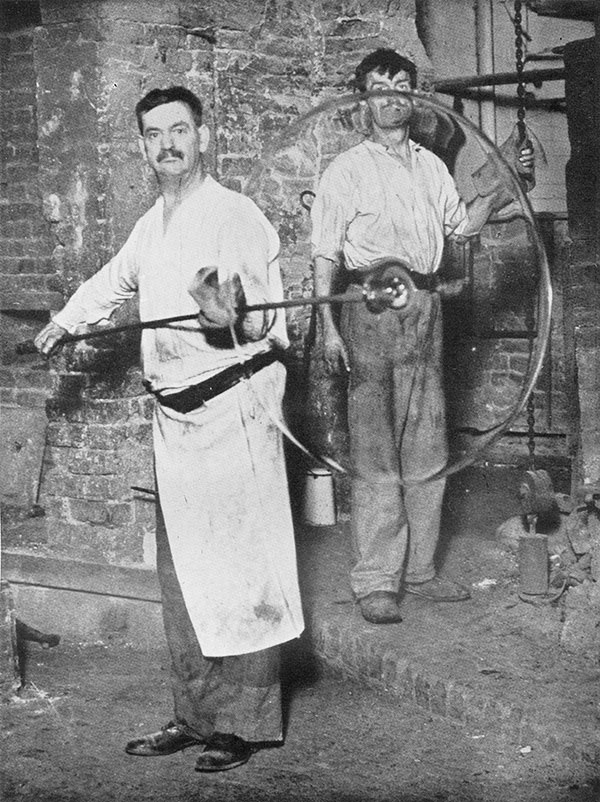A method for producing sheet glass were used in the 14th century in France and the sheet glass produced were called 'crown glass'. Areas such as Normandy and England specialised in the production of crown glass.
The production of crown glass was simpler, and crown glass became a more economical alternative to the significantly more expensive cylinder glass. To produce crown glass, glass was blown with a blowpipe and spun until a disc was formed. The disc could then be cut into plane glass. Glassblowers in Rouen, Normandy perfected the technique around 1300; with a blowpipe, the glass was blown into a balloon shape that was then opened on one end and spun rapidly. An iron pontil was attached to the end of the bubble opposite the blowpipe with molten glass, and the blowpipe was then cracked off. Heating the small aperture that ensued whilst spinning the glass yielded a disc that could measure up to 1.5 metres (about 4 feet) in diameter.
When the pontil was removed, it left behind a small, round crater in the centre of the disc. This crater was also called the "bull's eye” or the "crown". The disc was then cut into two planes and the central piece – with the crown – was removed; hence the name crown glass.
Because glass was valuable this piece was also sold, and it was used as glass for windows where transparent glass was not a priority. The two half moon-shaped glass sheets were then cut into smaller rectangular pieces. In Danish, these pieces were called 'ruder', a word which eventually came to denominate all window glass. Because the crown glass method could only produce small panels of glass, the cylinder method eventually prevailed over it and was used until the 19th century.

